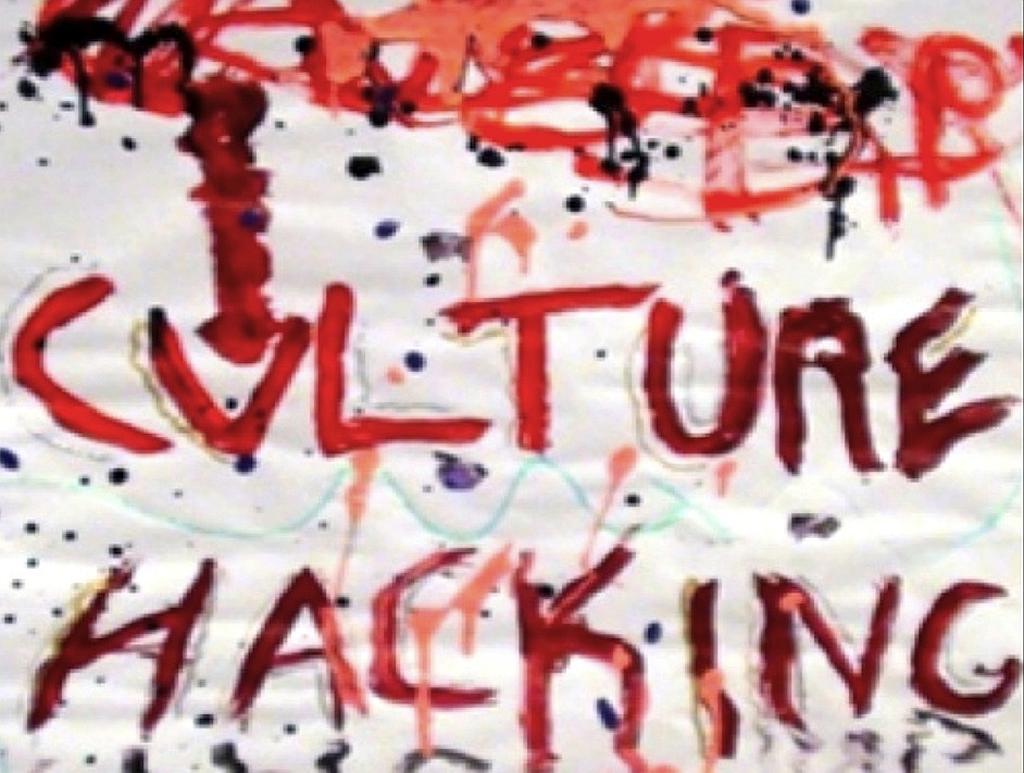Culture Hacking — The Essentials
Culture Hacking is a cornerstone of the startup scene and lean change management.
The Origins of Culture Hacking
You never change things by fighting the existing reality.
To change something, build a new model that makes the
existing model obsolete.
— Buckminster Fuller, Wikiquote
Culture Hacking integrates Systems Thinking the idea that organisations are adaptive systems, and from computer science the idea that every system can be hacked, wherein analogy of the computer's operating system, corporate culture is viewed as the operating system of companies, firms, and other social communities.
Be aware, corporate culture is not what is written in management slides or what is engraved in golden letters in marble hallways. Instead, corporate culture is how the employees really behave in their daily work at their workplace, with their colleagues, customers, and clients.
Originally, "hacking" is a word from journalists' language and means "doing journalist's work in an unusual way". Later it was transferred to IT, computers, programming, and operating systems. The notion of "Culture Hacking" in particular, stems from modern art which means to provoke existing cultural standards and to break down traditions to bring up cutting-edge new.
The notion of Culture Hacking entered the organisational design and team development in two historic waves: Culture Hacking 1 & 2.
Culture Hacking 1 was initiated in 1998 by Jim and Michele McCarthy with their famous Core Protocols as a systematic design and implementation of team practices and commitments.
The Core Protocols are linguistic patterns of human behaviour to support teams in collaboration, communication, and commitment to the common goal. They are a set of best practices to become an exceptional, high-performing team. They enable teams to learn results-oriented behaviour, enter a state of shared vision and stay there focused, trust each other, stay rational and healthy (so-called psychological safety), make decisions effectively, and keep moving toward the team’s goals.
As rules and guidelines, the Core Protocols describe how to behave properly as a team, in meetings, and in interpersonal interactions.
"Culture Hacking is the systematic design and implementation of team practices, commitments, and viewpoints that yield desired results. In other words, it's about hacking your own culture. [...] Culture hacking at its best is about creating cultures that enable people and teams to achieve greatness."
— Adam Feuer.
At the same time, other frameworks emerged as well, like Scrum, or Lean Software Development.
Cultural Hacking 2 arose in 2012 when Stefan Haas held his workshop at the LESS 2012 conference in Tallinn. Since then, cultural hacking became a very prominent concept in the Agile community, in the startup scene, and especially in Lean Change Management. With Culture Hacking 2 a new interpretation of culture hacking emerged.
In the new meaning, a culture hack is a small change exploiting a single area where your culture is vulnerable to change. Hacks are small and emotional. Immediate changes show big impacts. Culture hacks are not quick fixes for "cultural deficiencies" in the system. It’s more the agile mindset about focusing on small things more frequently rather than only trying to tackle and change the big things.
"Culture hacks are discrete, counter-cultural interventions aimed at changing how people interact with each other.
When they work, they can have a big impact. When they don't — no big deal, we can try something else."
— Carrie Bedingfield.
"Culture hacks are easy — you should be able to design and carry them out in 48 hours."
— Kristin Moyer, Gartner VP.
Why We Need It — The Benefits of Culture Hacking
In the last decades, organisational change initiatives became the crucial touchstones for each CEO. If you ask a CEO which is the biggest barrier to change is in their organisation, the most common response is almost always culture. In the traditional sense, culture is big, unwieldy and hard to change.
But, that is not the fault of organisational design. For sure, you have to and you can change organisations. Per se, people do not resist to change. They resist only to dumbly set up change initiatives forcing them to change.
The deadly mistake is to believe you can manage change, to believe, you can deal with organisational change like any other engineering program. Yes, you can manage, building the next high-performing computer system for meteorological forecasting, Yes, you can manage, building Falcon rockets flying to Mars. Yes, you can manage, and build hyperloop transportation systems. Yes, you can manage all these things because these issues are only complicated ones. In complicated problems, you can always identify (by investing the resources needed) cause-effect relationships.
However, organisations are self-organised, highly adaptive systems as Systems Thinking shows. They react to change. And more crucial, they change by themselves permanently. Organisational change is not a complicated issue, it's a complex problem. In contrast to complicated problems, in complex situations, cause and effect can only be perceived in retrospect. You cannot plan upfront in detail. Instead, you always have to adapt.
In another blog post, I explain the main failures in traditional change management which is to tackle complex problems with instruments you apply for complicated problem-solving. In complicated problems you sense, analyse, and respond — you can plan and manage change. In complex issues this does not work: you can only probe, sense, and respond. This is simply learning from the Cynefin Framework.
Here comes Culture Hacking in. Hacking in its generic form has innovation, disruption, and emergence inside. White Hacking — the good side of hacking — tries to understand and challenge a system through small destabilisations and interventions with the goal to bring up cutting-edge topics. The contrast is the evil side, Black Hacking, where you try to break down the system at all costs.
The charm of Culture Hacking is its ease to trigger wide and sometimes opposing attitudes and ideas to create something new in your (corporate) culture. A culture hack is a small change intervention exploiting a single area where your culture is to change. You can apply a culture hack fast and quickly, with a small effort. By its semantic provenance (= computer hacking), culture hacking always implies its genuine inherent attributes: playful experiments to perturb an unknown order to understand how it reacts and to create something new. ((As Düllo 2005 explains, Culture Hacking incorporates aspects of
- Dichotomy Order vs. Disorder. — In hacking, we penetrate and explore unknown systems. We try to understand the unfamiliar order by triggering and as well by destabilising it. The system reacts to external incidents or disturbances with "re-programming". Thus, a hack causes new structures to emerge in an unforeseeable way.
- Playing and Experimenting. — Hacking combines sobriety with fun. While hacking you become more and more ambitious: you want to conquer the fortress, no matter the cost. At the same time, you play in an experimental way. If a hack doesn't work, don't worry, try a different one.
- Focusing on original purpose. — Hackers are kind of admonishers. If a system is used or functions against the purpose it was created for, hacking can lead it back.))
Culture hacks are suitable means to prevent the pitfall of traditional organisational change management: the long and exhausting upfront planning. Culture hacking is not finding weak points to break into a system illegally, like Black Hacking. Instead, it is White Hacking the cultural system, to find vulnerable points in your culture and turn them into real change that sticks (Kristin Moyer, Gartner VP, at Gartner 2018 Symposium/ITxpo in Orlando, Florida.)
Culture Hacking Procedure
Culture hacks are not goal-oriented interventions where the target state is planned upfront in great detail. Instead, the hack is a systemic trigger for the system to change itself. Culture hacks are more experiments in the Lean Startup or Lean Change Management sense. You hypothesise a certain cause-effect relationship in the systems' behaviour and the hack tries to trigger this behaviour.
Culture Hacking Procedure
- Observe the system to be changed.
- Identify options for potential change(s): where and what to change.
- Look for a crack where you can shift levers.
- Create and apply the hack! — This is the fun part with a lot of art.
- Observe (measure) whether the system behaves in the intented way or not.
Don't be disappointed if a hack does not work. Since it is an experiment, there is no success guarantee. If the hack doesn't work, don't worry. Modify it or try a new one, instead.
Here is the Culture Hacking Procedure in more detail:
- Get Insights: Observe. — Observe the culture and subcultures around you — What do you see? What kind of problems do you see? How do they affect you? Happens the problem always in the same manner? Are there variants? If yes, what happens and correlates to these variants?
Describe the problem: What is the problem and what should be changed? Is the problem useful? - Get Insights: Create Hypothesises. — Are there other problems behind the obvious one? (→Design Thinking). How can I use correlating events? How can I nudge or trigger the problem?
- Get Insights: Find the Crack. — Where can I put the leverage on? Does the problem have a weak spot?
- Find Options: Identify the Application. — Where can I find opportunities to solve the problems and promote change? How can I modify the problem? Can I amplify, or exaggerate it?
- Find Options: Assess Risks. — Where is the boundary to harm, or break down the system? Do I want to destroy the system?
- Find Options: Create Hack. — Here is the Art: create something that has never been done: build your hack.
- Experiment: Run. — Start your experiment in the chosen field of application. Apply your hack.
- Experiment: Review. — Observe how the system reacts. If not successful, step back to 1.
Very important in Culture Hacking is that the system does not identify the hack as an external stimulus, rather than an internal one. Adaptive systems tend to react with immediate resistance to external interventions.
Risk Assessment in Culture Hacking
Culture hacks are context-sensitive. You can not reuse culture hacks. What works in one field of application does not necessarily work in a related domain. Or, after the hack, the system shows none or quite different behaviour than the intended one.
Culture hacks can be dangerous to the system and to the hacker as well. There is a wide bandwidth from hacks being too weak to affect the systems and hacks breaking it down. From hacks with no or huge legal punishment, the hacker can be impeached.
You have to have to find the sweet spot between vulnerability and effort. Thus, one challenge is very easy: choose the culture hack with the most impact and little effort.
There is a simple risk assessment for the vulnerability issue. Perform a variant of Bull's Eye evaluation. Draw three coloured circles:
- "Red" - Zone of Death; very dangerous, high impact with unforeseeable consequences. High risk for the system, hacker, or both.
- "Blue" - Zone of Sustainable Change;
- "Green" - Zone of non-hazardous, but ineffective changes.
Therefore, chose culture hacks always with rating "blue".
Further Reading
- Adam Feuer (2011): Culture Hacking. Nov. 2011.
- Maya Zuckerman (2014): Culture Hacking 101. Huffpost. Sep. 2014.
- Tim Rayner (2016): Startups and the Hacker Way: The (Counter-) Cultural History of Lean Method. Mar. 2016.
- Jason Little (2012): Agile Management Innovation and Culture Hacking at LESS 2012.
- Business Culture Hackers, Website.
- Stefan Haas, Website.
- Carrie Bedingfield (2018): Culture hacking: a fast, simple (if not easy) way to move to an agile culture. Slideshare.net, 2018.
- Seb Paquet (2010): How To Become A Culture Hacker. Slideshare.net, 2010.
- Thomas Düllo, Franz Liebl (2005): Cultural Hacking: Kunst des Strategischen Handelns. Springer 2005.
- Kristin Moyer, Gartner VP, at Gartner 2018 Symposium/ITxpo in Orlando,
: Redarquia.net • Gamestorming.org, .




Leave A Comment